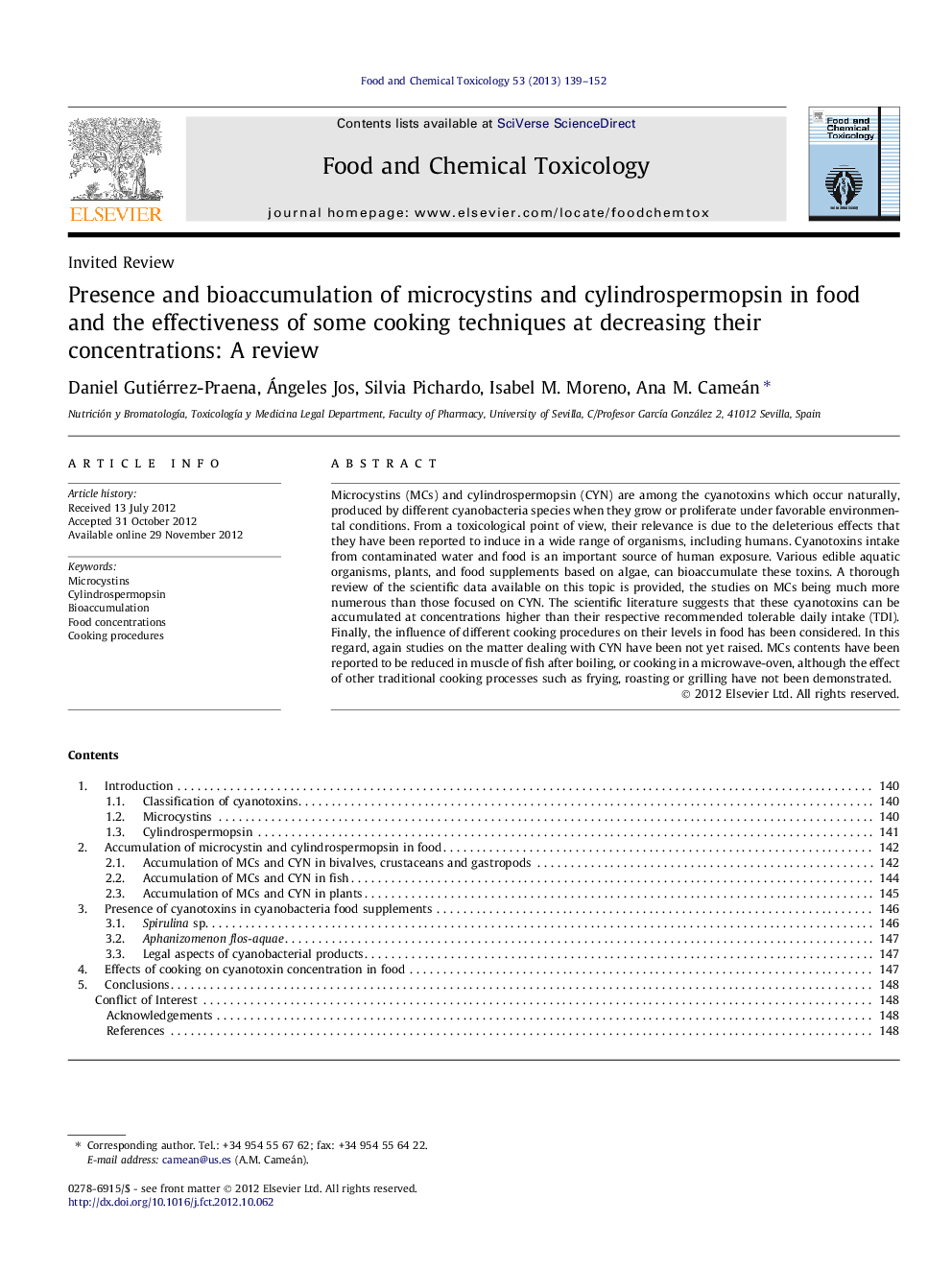| Article ID | Journal | Published Year | Pages | File Type |
|---|---|---|---|---|
| 5851298 | Food and Chemical Toxicology | 2013 | 14 Pages |
Microcystins (MCs) and cylindrospermopsin (CYN) are among the cyanotoxins which occur naturally, produced by different cyanobacteria species when they grow or proliferate under favorable environmental conditions. From a toxicological point of view, their relevance is due to the deleterious effects that they have been reported to induce in a wide range of organisms, including humans. Cyanotoxins intake from contaminated water and food is an important source of human exposure. Various edible aquatic organisms, plants, and food supplements based on algae, can bioaccumulate these toxins. A thorough review of the scientific data available on this topic is provided, the studies on MCs being much more numerous than those focused on CYN. The scientific literature suggests that these cyanotoxins can be accumulated at concentrations higher than their respective recommended tolerable daily intake (TDI). Finally, the influence of different cooking procedures on their levels in food has been considered. In this regard, again studies on the matter dealing with CYN have been not yet raised. MCs contents have been reported to be reduced in muscle of fish after boiling, or cooking in a microwave-oven, although the effect of other traditional cooking processes such as frying, roasting or grilling have not been demonstrated.
⺠Cyanobacterial toxins can be accumulated in food being a risk to human. ⺠Human consumption of aquatic organisms and plants contaminated with cyanotoxins could constitute a health risk. ⺠The safety of dietary supplements containing cyanobacteria must be properly evaluated. ⺠Cooking process contributes to reduce MCs levels in food.
